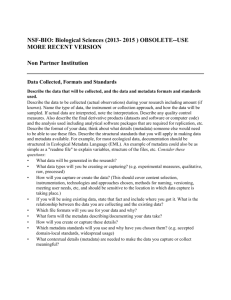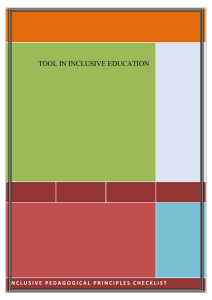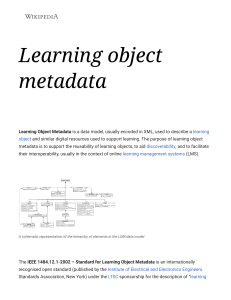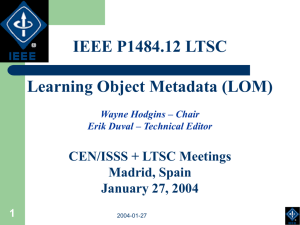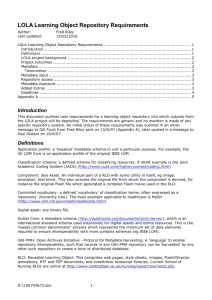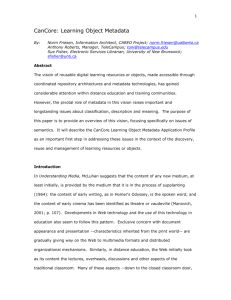Use Case - Dublin Core® Metadata Initiative
advertisement
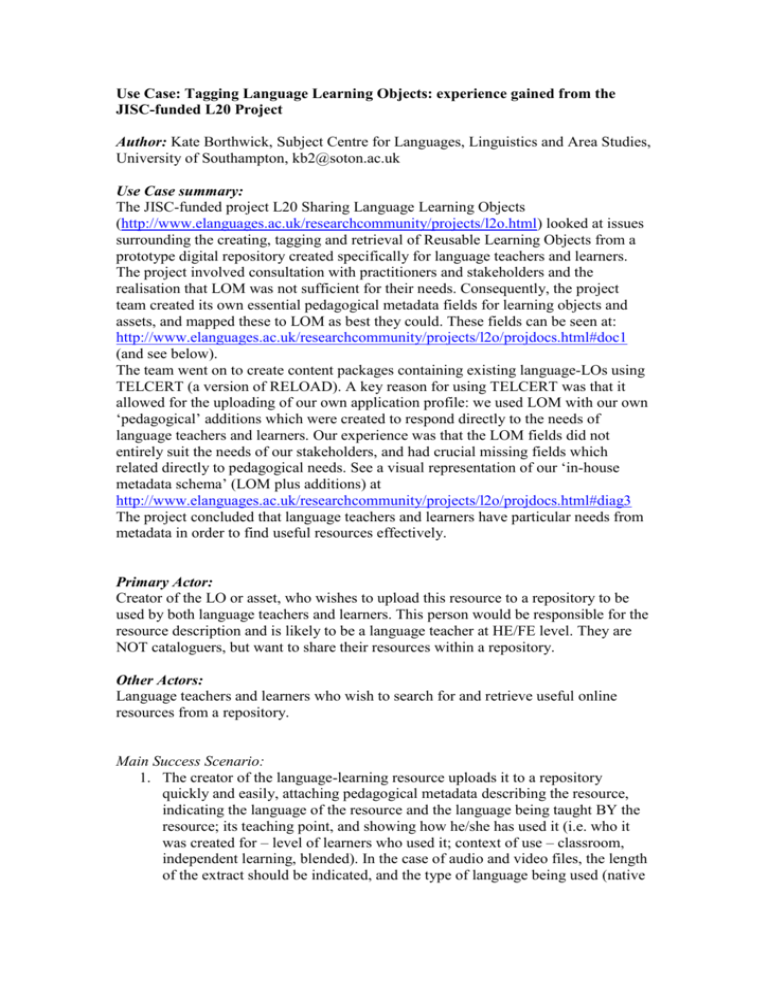
Use Case: Tagging Language Learning Objects: experience gained from the JISC-funded L20 Project Author: Kate Borthwick, Subject Centre for Languages, Linguistics and Area Studies, University of Southampton, kb2@soton.ac.uk Use Case summary: The JISC-funded project L20 Sharing Language Learning Objects (http://www.elanguages.ac.uk/researchcommunity/projects/l2o.html) looked at issues surrounding the creating, tagging and retrieval of Reusable Learning Objects from a prototype digital repository created specifically for language teachers and learners. The project involved consultation with practitioners and stakeholders and the realisation that LOM was not sufficient for their needs. Consequently, the project team created its own essential pedagogical metadata fields for learning objects and assets, and mapped these to LOM as best they could. These fields can be seen at: http://www.elanguages.ac.uk/researchcommunity/projects/l2o/projdocs.html#doc1 (and see below). The team went on to create content packages containing existing language-LOs using TELCERT (a version of RELOAD). A key reason for using TELCERT was that it allowed for the uploading of our own application profile: we used LOM with our own ‘pedagogical’ additions which were created to respond directly to the needs of language teachers and learners. Our experience was that the LOM fields did not entirely suit the needs of our stakeholders, and had crucial missing fields which related directly to pedagogical needs. See a visual representation of our ‘in-house metadata schema’ (LOM plus additions) at http://www.elanguages.ac.uk/researchcommunity/projects/l2o/projdocs.html#diag3 The project concluded that language teachers and learners have particular needs from metadata in order to find useful resources effectively. Primary Actor: Creator of the LO or asset, who wishes to upload this resource to a repository to be used by both language teachers and learners. This person would be responsible for the resource description and is likely to be a language teacher at HE/FE level. They are NOT cataloguers, but want to share their resources within a repository. Other Actors: Language teachers and learners who wish to search for and retrieve useful online resources from a repository. Main Success Scenario: 1. The creator of the language-learning resource uploads it to a repository quickly and easily, attaching pedagogical metadata describing the resource, indicating the language of the resource and the language being taught BY the resource; its teaching point, and showing how he/she has used it (i.e. who it was created for – level of learners who used it; context of use – classroom, independent learning, blended). In the case of audio and video files, the length of the extract should be indicated, and the type of language being used (native 2. 3. 4. 5. speaker? Colloquial? Formal? Academic?) The metadata fields are easy to understand and quick to fill out. Language teachers and learners search for online resources by browsing using keywords, or a visual concept map, and find what they need by using the comments left by previous downloaders (and the original uploader). Pedagogical comments are key to finding useful resources. The creators of the original resources can edit them in the light of further review/usage and add additional comments to the metadata in a comments section, or by editing the original metadata. Users can edit the resource and re-upload a new version or variant of the original with their comments on how the resource has been adapted and used within their own teaching context. A link would be generated automatically with the original resource. The resources can be shared within a wider community by uploading to other local/institutional/national repositories. Further information: See the links recommended above for a full description of the metadata fields revealed to be most important for our stakeholders. They comprise a kind of ‘vocabulary’ relevant to language learning objects and other online resources. (We came up with different metadata fields for LOs and for assets. See below). The JISCfunded FAROES project www.ecs.soton.ac.uk/research/projects/Faroes , run by the Learning Societies Lab at the University of Southampton, aims to test these fields further with stakeholders, and distill them to an optimum useful number. Metadata fields for LOs: (numbers relate to LOM fields) 1.2 Title of learning object 1.3 Educational Language 1.4 Description 1.5 Keywords 1.6 Topic 2.3.x Author/Contributor 5.2 Pedagogic type 5.9 Time needed to complete task (approx) 5.10 Main task purpose 5.15 Description for learner (e.g. main & subsidiary learning outcome(s), skill(s) being practised) 5.21 Language of Task instructions 5.22 Subject or skill area(s) 6.3 Copyright Holder 7.x Technical assets (e.g. Flash, image etc) 7.x Pedagogical assets (e.g. video, transcript etc) 7.x What associated scaffolding is there? (e.g. answers/ feedback / help/weblinks ) 9.1 Level of task difficulty 9.1 Level (CEF, GCSE/A level, Languages Ladder, IELTS…) Metadata fields for digital assets: 1.2 Title or file name of resource 1.3 (5.11) Native Language 1.4 Description of resource (e.g. type, video/audio setting, topic) 1.5 Key resource type and content words 2.3.x Author/Contributor 4.1 File type (e.g. .swf/.doc/.mp3) 4.7 Length if applicable of time dependant assets (Video/audio/flash) 5.12 Further Language details (if applicable) – 5.12.1 Region: 5.12.2 Accent/dialect: 5.12.3 Register: 5.13 Suggestions for further use 5.14 Information for users 5.16 Presentational form or Genre (e.g. song, script, interview, flowchart 5.17 Language function(s) if applicable (e.g. purchasing goods, asking the way) 5.18 Discourse or text type (e.g. monologue, dialogue, list, article) 5.19 Are there subtitles/translation? (including language of subtitles) 5.20 Approx Word-count or page count 6.3 Copyright Holder 7.x Other related Pedagogical assets (e.g. video, transcript, translation ) 7.x Related subject or skill(s) area(s)


